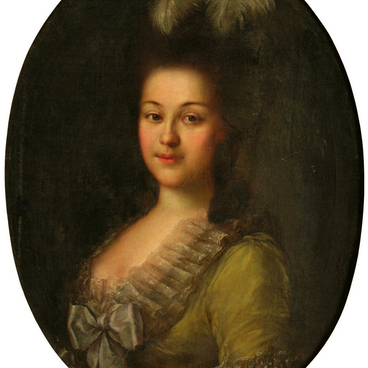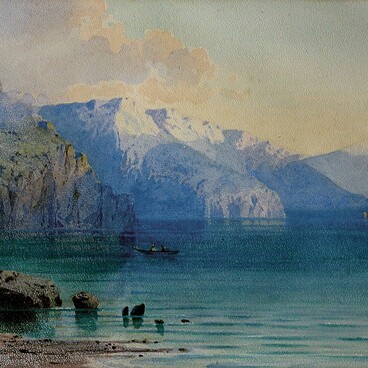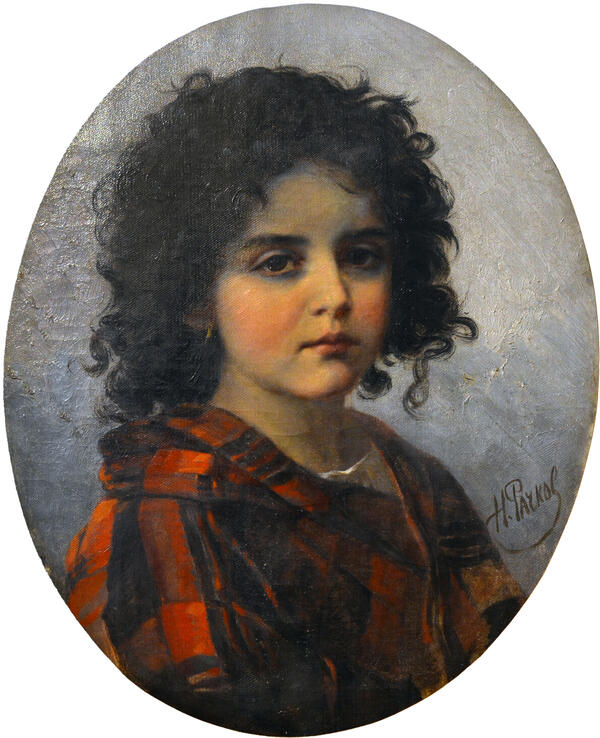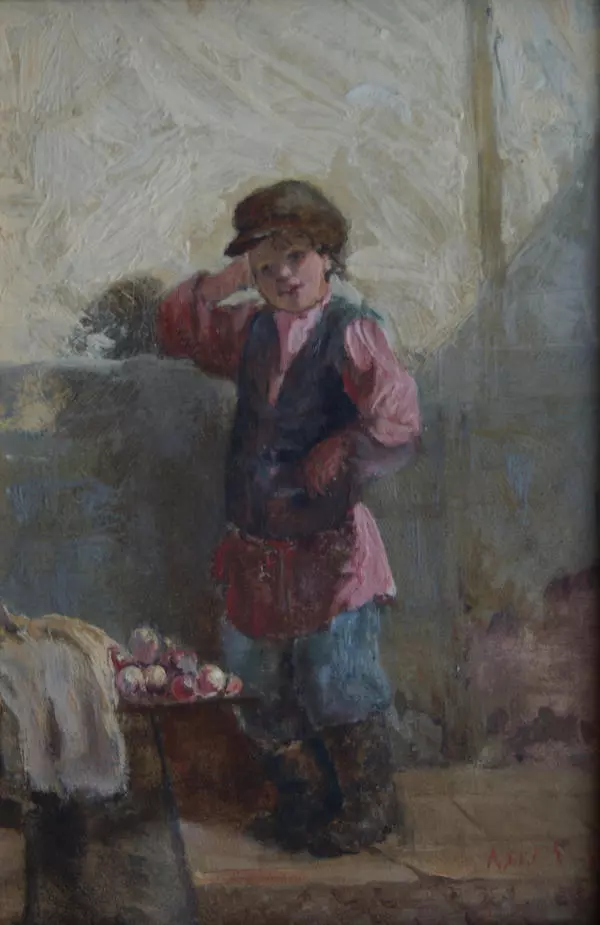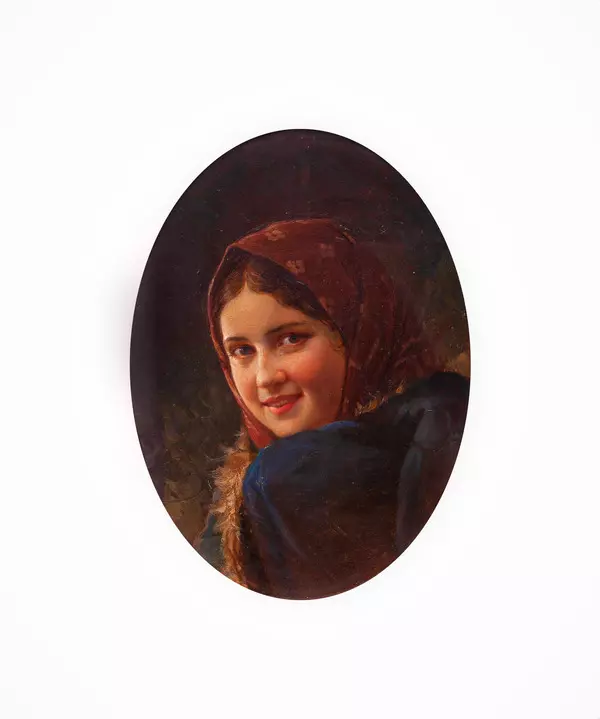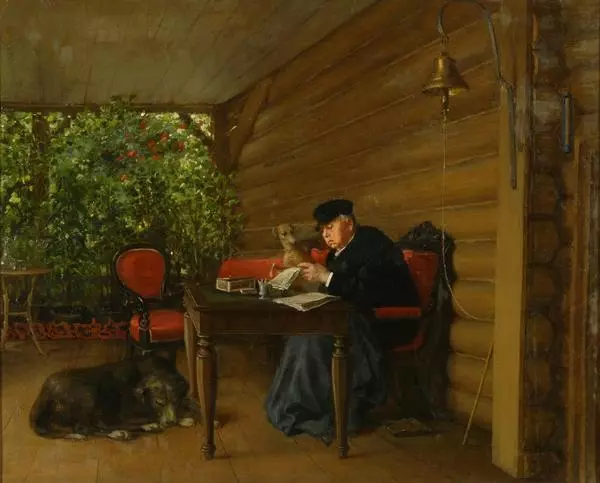Countess Praskovya Sergeevna Uvarova (1840-1924) inherited the name and a considerable part of character from her great-grandmother Praskovya Yurievna Gagarina. The oval portrait of the Countess differs from other Karacharov portraits by a luxurious gilded frame, and most importantly, by a completely different, new style of painting. The quality of the paints has not stood the test of time — now there are lilac shades on the face, somewhat smoothed by restoration. Popular Russian portrait painter N.E. Rachkov painted Countess Uvarova in the 80s at the height of her powers. Regular, dry, but energetic features of her face, a straight parting of brown hair, a traditional braid around the head, a noble posture, a little lace — this is how the learned countess looked. In another pastel portrait by the German artist Scharwechter, she is much older, but her appearance has hardly changed. Praskovya Sergeevna can be immediately recognized in the photo, where she is already in her eighth decade — she has the same hairstyle, a simple outfit. The hairstyle with a braid around the head was also that of the young Princess Praskovya Shcherbatova, as we can see in the preserved miniature watercolors.
“If to love, so without reason, if to threaten, so in real earnest …”, — Alexey Tolstoy wrote about his cousin, her husband, archaeologist Alexey Uvarov. He was fifteen years older than her. He managed to see in a nineteen-year-old neighbor’s young lady not only a charming creature, but also a future colleague! Contemporaries rightly called Count Alexey Sergeevich Uvarov (1825-1884/5) “the father of Russian archaeology.” The count died young, but his wife and faithful companion became a worthy successor to the study and preservation of Russian antiquities. Countess Uvarova herself supervised the excavations and wrote 174 works on various issues of archeology and cultural history. She was an honorary member of the Russian Academy of Sciences, was the chairman of the Moscow Archaeological Society. Her special merit is the organization of nine archaeological congresses, the publication of works on archeology, the rescue of many ancient cultural monuments, including in Murom. Contemporaries called her the second Dashkova.
In addition to scientific works, she had six children! Her sons became statesmen, two daughters did not marry and helped their mother in everything. There was a hospital and a school in the village of Karacharovo. Many famous scientists came to the estate “Krasnaya Gora”. The activities of the Uvarovs made impact on the cultural life of the entire Murom district, contributed to the awakening of interest in local history, the collection of antiquities. A wonderful library was kept in Karacharov. Now it is in the museum’s rare fund. Hundreds of autographs of scientists and publishers have been identified on the books — almost all of them are addressed to Countess Uvarova. She ended her days in exile. A military unit was located in the former estate of the Uvarovs in Karacharovo.
“If to love, so without reason, if to threaten, so in real earnest …”, — Alexey Tolstoy wrote about his cousin, her husband, archaeologist Alexey Uvarov. He was fifteen years older than her. He managed to see in a nineteen-year-old neighbor’s young lady not only a charming creature, but also a future colleague! Contemporaries rightly called Count Alexey Sergeevich Uvarov (1825-1884/5) “the father of Russian archaeology.” The count died young, but his wife and faithful companion became a worthy successor to the study and preservation of Russian antiquities. Countess Uvarova herself supervised the excavations and wrote 174 works on various issues of archeology and cultural history. She was an honorary member of the Russian Academy of Sciences, was the chairman of the Moscow Archaeological Society. Her special merit is the organization of nine archaeological congresses, the publication of works on archeology, the rescue of many ancient cultural monuments, including in Murom. Contemporaries called her the second Dashkova.
In addition to scientific works, she had six children! Her sons became statesmen, two daughters did not marry and helped their mother in everything. There was a hospital and a school in the village of Karacharovo. Many famous scientists came to the estate “Krasnaya Gora”. The activities of the Uvarovs made impact on the cultural life of the entire Murom district, contributed to the awakening of interest in local history, the collection of antiquities. A wonderful library was kept in Karacharov. Now it is in the museum’s rare fund. Hundreds of autographs of scientists and publishers have been identified on the books — almost all of them are addressed to Countess Uvarova. She ended her days in exile. A military unit was located in the former estate of the Uvarovs in Karacharovo.

